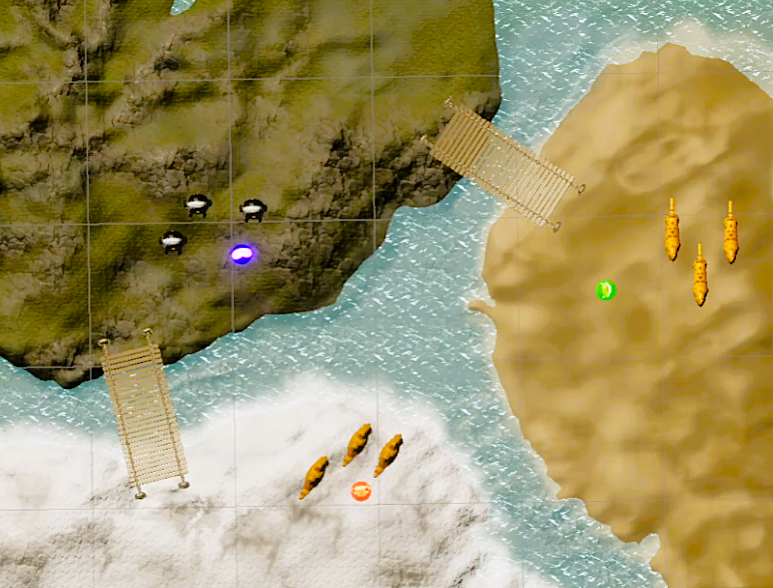· Game Development · 4 min read
National Space Centre Game
Over three months I worked with a small team of four to produce a Unity-based game designed to bring awareness on animal migration due to climate change.

Overview
Developed a 3D game about climate change and animal migration which was projected onto the floor of the National Space Centre (NSC), powered by Unity and Microsoft Kinect. The goal was to create a simple yet interactive game about how animals respond to climate change that resonated with both children and teachers.
Project Details
Description
We created a 3D game projected onto the floor, allowing users to interact with the game environment using their movements. The game educates children about climate change and animal migration in an engaging way.
Role
As the project manager, and one of two programming developers, I led the entire process from concept to execution. I created the terrain using the terrain modifier tool, developed animal behaviour scripts, and managed the project using Trello for task tracking and coordination. I also filled in weekly reports and arranged testing days at the National Space Centre so that we could tailor the project to the room where it was projected.
Team and Responsibilities
We had a balanced team made up of four people with both programming and creative skills. I was responsible for managing the project, designing the game concept, integrating OpenAI’s API, and coding along with another teammate. Our team worked collaboratively to ensure the project’s success.
Tools and Technologies
- Unity: For game development and environment creation.
- Microsoft Kinect: For detecting player movements and interactions.
- C#: For scripting animal behaviours and game mechanics.
Project Highlights

Gameplay
The game features a 3D environment with three different climates: tropical forest, desert and arctic. There is a river which divides them, with bridges between the lands to allow players with animals to cross. Players interact with the game by standing on the projected floor, and the Kinect detects their movements to guide animals back to their correct climates.
Educational Impact
The game is designed to teach children about the impact of climate change on animal migration. By engaging with the game, children learn about the importance of mitigating climate change to ensure a healthy environment for animals. This aligns with the National Space Centre’s (NSC) mission, as they conduct research on environmental patterns using extraterrestrial satellites. This research helps to monitor and understand the effects of climate change, making the game a valuable educational tool that supports the NSC’s efforts.
Testing and Feedback
We conducted multiple testing sessions at the National Space Centre to refine the game. Feedback from their development team, highlighting the game’s educational value and interactive nature.
Challenges and Solutions
Technical Challenges
One of the main challenges was integrating Kinect with Unity to accurately detect player movements. We attempted to integrate the Kinect software with the game, however, since we were provided no documentation and there was little that we could find by conducting research, we were forced to inevitably integrate a different approach to controlling the game (which we also used during development). The mouse was used to move coloured spheres which represented people.
We also encountered issues with Microsoft Kinect’s software and the way in which it was integrated into the NSC. Due to this, we had to use a very old version of Unity which did not support UI elements. Being made aware of this only a few weeks before the game was due, there were many elements which needed to be refactored. This included the entire UI which we had been using to stucture important components of the game such as instructions and fun facts which the animals presented. Fortunately we were able to remove the UI and downgrade to an older version of Unity in time so that the game could be run successfully.
Project Management
Managing a team and coordinating tasks was crucial for the project’s success. Using Trello and regular meetings, we kept everyone on track and maintained clear communication.
Conclusion
The National Space Centre Game project was a successful collaboration that combined technical innovation with educational content. It showcases the potential of using technology to create engaging learning experiences for children.




